How to Throw a Sinker or Two-Seam Fastball
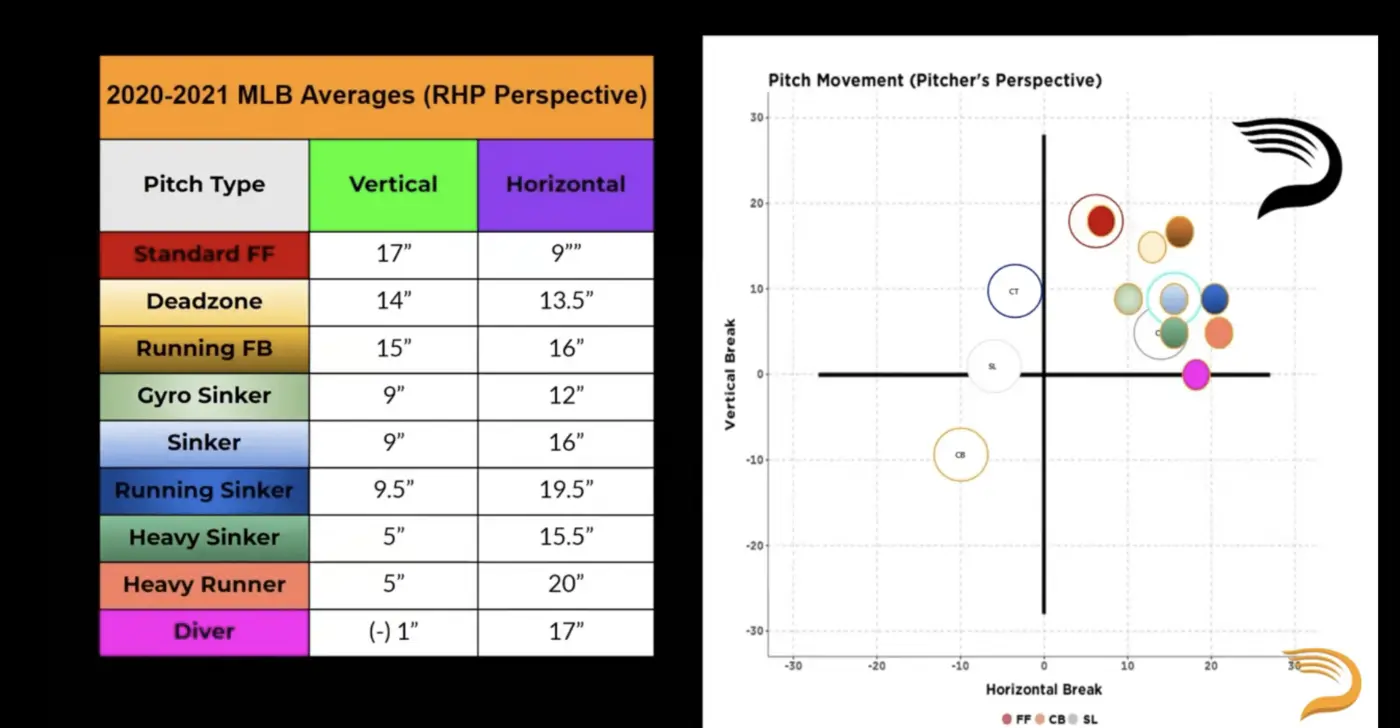
Want to learn how to throw a sinker? In this piece we’ll dissect the differences between sinkers and two-seam fastballs and detail how to design a pitch depending on the type of movement you may be trying to create.

Sinker / Two-Seam FB Overview
Along with four-seamers, sinkers and two-seamers make up the rest of the fastball pitch type family. While known for their diving and arm side action, sinkers and two-seam fastballs have very similar pitch profiles as both can be thrown with high velocities and relatively large amounts of sidespin.
What separates these two pitch archetypes is that sinkers will often display greater diving action compared to a two-seamer, which maintains lift alike to a four-seamer but possesses an element of arm side run.
Additionally, as part of most player’s arsenals, these two pitches are strategized to attack low in the zone and are recognized for inducing weak contact.
Due to the amount of overlap between sinkers and two-seamers, we combine their grip types within our database into one list for classification. We’ll cover the most often used grip for either and dissect the slight differences to help you learn how to throw both.
Gripping a Sinker or Two-Seam FB
Our most frequent grip, classified as “FT 1”, is utilized about 75% of the time. Here is an example below:
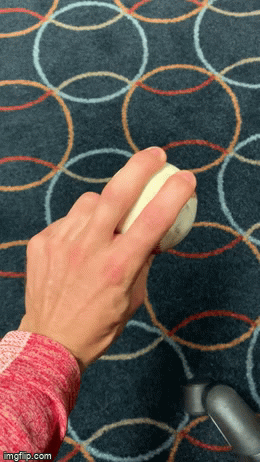
We find that many athletes employ “FT 1” for both sinkers and two-seamers, but the most common separator is how the grip is used at release to create the desired movement. However, before we dive into that component, we’ll want to dissect how to hold the ball first.
Looking at the GIF above, we can immediately see that the index and middle fingers are leveraged onto both seams. This is standard for any two-seam fastball, giving it both a two-seam orientation and its namesake.
Similarly for a sinker, both fingers can be placed on the seams, although depending on preference, you may move the index finger slightly inwards.
The grip above will keep the thumb positioned underneath the ball for control, but its placement can be modified based on comfort. We usually see most pitchers either put their thumb directly underneath the ball or just off-center. Likewise, the ring finger is placed on the side of the ball in order to help maintain control while the pinky finger is completely off.
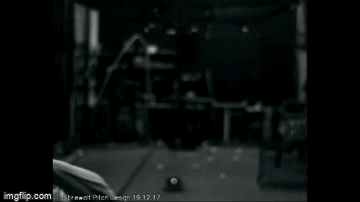
Additional grips are provided at the end of this post to give you more options to consider.
How to Throw a Sinker or Two-Seam FB
As you come through release, throw hard and think about getting on top of the ball and using your index/middle fingers to “roll over” to generate sidespin.
The lower your arm slot, the easier this may be for you. Generally, pitchers who have lower arm slots have a better feel for creating sidespin since their arm at release is already in a more horizontal position.
Below is a visual of two pitches that show the differences in sidespin. The ball moving at a 2:30 axis displays an increase in sidespin over its counterpart, giving way to a pitch that moves with the goal of diving and running action.
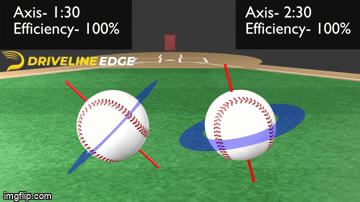
When throwing two-seamers, the process is a little bit different and mostly dependent on your release point. We want some degree of sidespin, preferably between a 1:30 – 2:00 axis, but just enough backspin to maintain a vertical element of the pitch that allows the ball to have lift like a four-seamer and move with arm side run instead of diving as aggressively as a sinker.
If you throw with a higher arm slot, you may want to consider inducing an element of “cut” to the ball. When a ball is thrown with “cut” or has a low spin efficiency we’d see the two-seam orientation shift, meaning the ball would have a degree of gyro spin. A cue to think of when trying to establish this type of spin is to “throw around the ball.” Here is an example of what we mean by gyro spin:
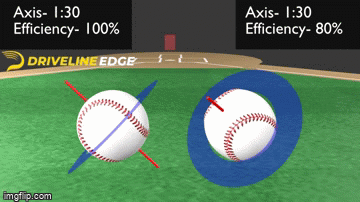
Notice how the axis on this ball shifts so that it is not completely perpendicular to the plate. Now if we look back to a ball that has a two-seam orientation and is thrown with enough cut, you’d begin to see the horseshoe on the side of the ball become more noticeable. This can help pitchers generate additional arm side run, especially from higher release points. Throwing a two-seamer consistently with added horizontal movement by imparting cut on the ball can be difficult to master however, and this type of adjustment is only recommended for higher-level throwers.
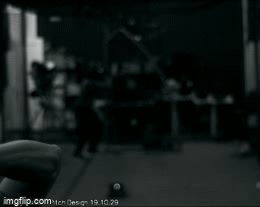
Analyzing Movement
It’s important to consider that both sinkers and two-seam fastballs can fall similarly on a horizontal and vertical break plot. For a right-handed pitcher, two-seamers will have similar amounts of break both up and out versus sinkers which mostly break out and down.
The image below, shows where we’d expect a right-handed pitcher’s two-seam movement to show upon a Rapsodo. A left-handed pitcher’s two-seam fastball would be a mirror image of this graphic.
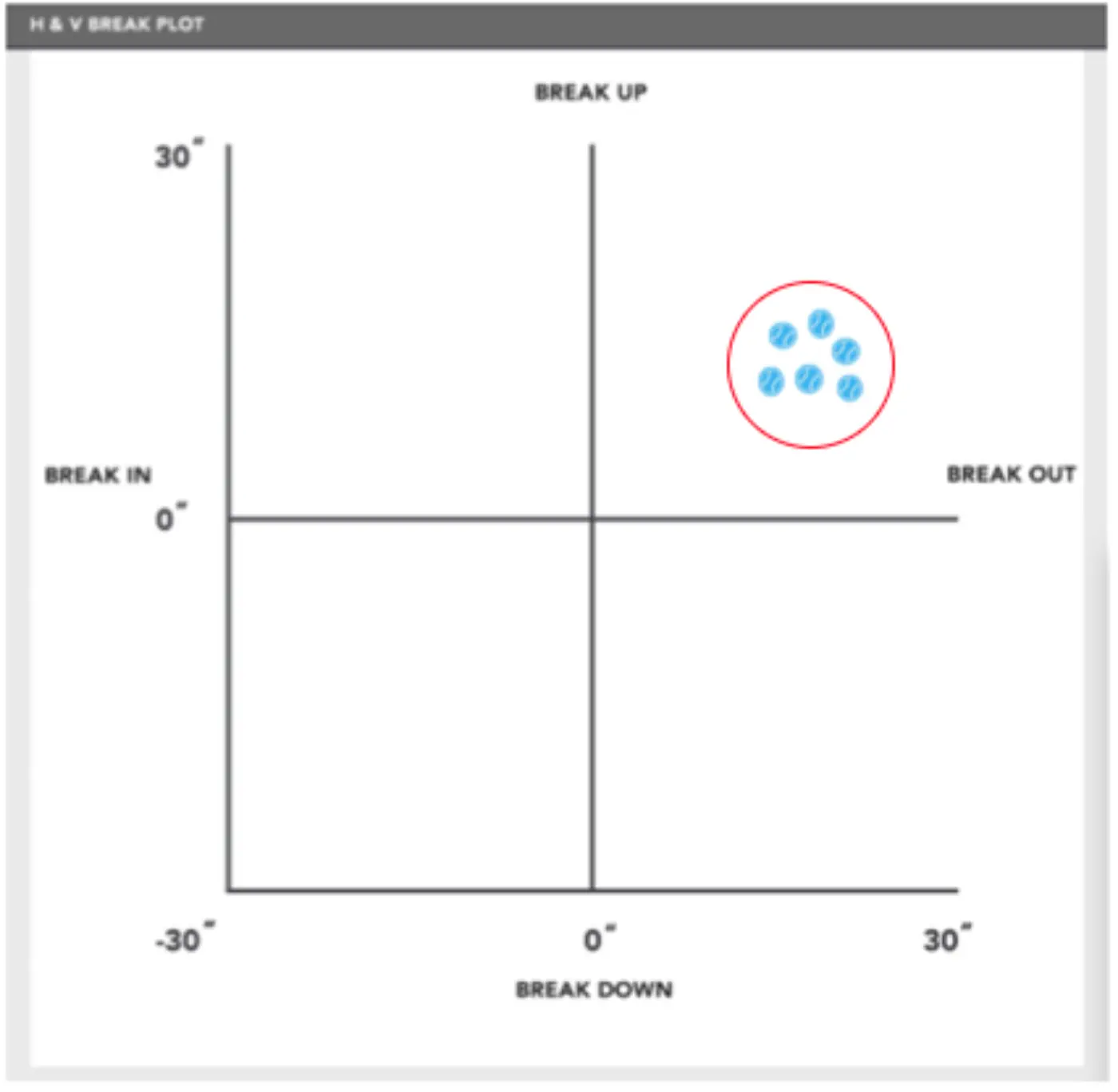
Additional Fastball Grips
We’ve listed some additional grips below that can be used. Primarily, our pitchers will use “FT 1” about 75% of the time, but finger placement can always be adjusted based on comfort.
Like the four-seam fastball, most athletes will find that leveraging both fingers on the seams enables them to produce greater spin and “feel” for the pitch. There are exceptions where an athlete may have greater success with placing their fingers in between the seams on the leather as in “FT 2” or wider off the seams as shown in “FT 3”. Although, the wider you go the less velocity and spin we’d expect to produce.
This result makes sense as a grip like that would start to resemble a splitter, a pitch known for killing spin and velo. So while we recommend athletes to start with “FF 1”, discovering grips is an individualistic process and it is necessary to play around with differing positions in order to realize what suits you and your strategy best.
Close grip “FT 2”:
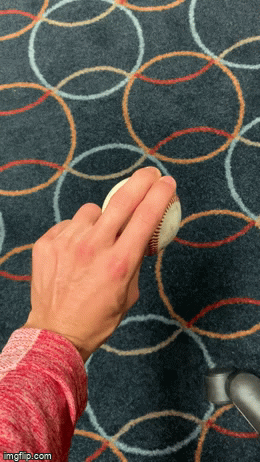
Wide grip “FT 3”:
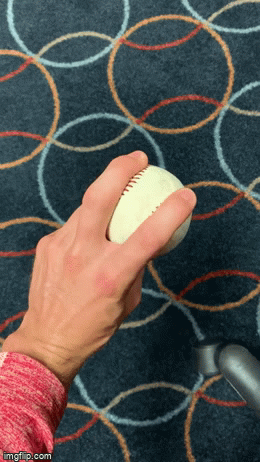
Additional cues for Two Seam w/ no gyro spin: “Stay through it”,
Additional cues for Two Seam w/ gyro spin: “Come around it”, “think slider”
Additional cues for Sinker: “Get over the top of it”, “Roll over the ball”
Written by R&D Pitching Analyst Mike Tampellini
If you’re interested in learning more about our Pitch Grip series or how to increase velocity see these blogs for more information:
Read How to Throw a Sinker or Two-Seam Fastball
Comment section
Add a Comment
You must be logged in to post a comment.
Jerry Weinstein -
Two seam across the narrow seams with variations?
David Besky -
We have not tracked gripping the ball across the narrow seams thus far, though we are incorporating more detail in the grip tracker moving forward (including evaluating a one-seam grip). Certainly, gripping the ball across the narrow seams may be more comfortable and produce a better result for some pitchers, so may be worthy of testing out for particular pitchers in the pitch design process.